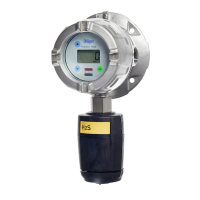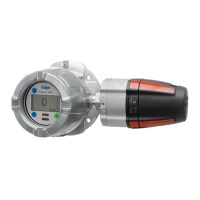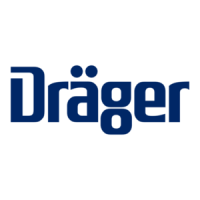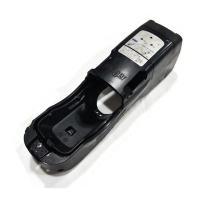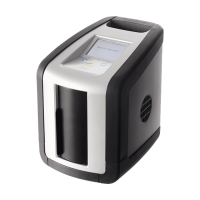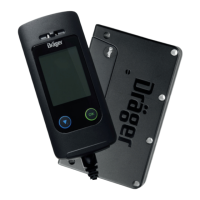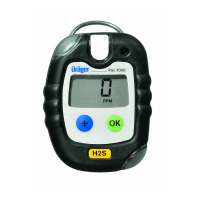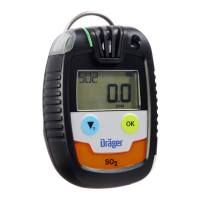Description
Dräger Polytron 5000 5
2 Description
2.1 Product overview
The instrument is powered by 16 to 30 VDC. Gas
concentrations, error messages, and software menu choices
are displayed on a 3 digit LCD display.
Access to the software is obtained by tapping the magnetic
wand (part number 4544101) on the glass viewport at the
appropriate indicators. In this way, the instrument can be
configured, calibrated and maintained non-intrusively, so
declassification of the area is not necessary for these
procedures.
The Polytron 5000 is housed in either an epoxy powder-coated
aluminum or stainless steel 316 enclosure with 3/4” NPT
threaded ports located at the 3 and 9 o’clock positions.
2.2 Intended use
The Dräger Polytron 5000 is a transmitter for the detection of
carbon monoxide, hydrogen sulphide, oxygen, hydrogen,
ammonia, chlorine, sulfur dioxide and nitrogen dioxide in
ambient air. The instrument is designed to be installed in
permanent locations, and depending on the version, it is
approved for use in certain specified hazardous, classified
areas (
see Section 6.1 on Page 12). Polytron 5000 gas
detectors are available in two versions, those used for
hazardous areas and others for general purpose only (
see
Section 6.1 on Page 12).
Caution: Not tested in oxygen enriched atmospheres (>21 %
O
2
). High off-scale readings may indicate an explosive
concentration.
Hazardous area units
Polytron 5000, explosion-proof instrument for the monitoring of
CO, H
2
S and O
2
.
Non-hazardous area units
Polytron 5000, general purpose instrument for the monitoring
of NH
3
, Cl2, SO
2
, NO
2
, NO, EO and H
2
O
2
(see Section 6 on
Page 12, and Section 8 on Page 13 for details).
2.3 Intended operating area and operating
conditions
Hazardous areas classified by zones:
The device is intended to be used only in hazardous areas
classified zone 1 or zone 2, within a temperature range as
marked on the device, where gases of explosion groups IIA,
IIB or IIC and temperature class T4 or T6 (depending on the
maximum ambient temperature) or dusts of groups IIIA, IIIB or
IIIC may be present.
Hazardous areas classified by divisions:
The device is intended to be used only in hazardous areas
Class I&II, Div. 1 or Div. 2, within a temperature range as
marked on the device, where gases or dusts of groups A, B, C,
D or E, F, G and temperature class T4 or T6 (depending on the
maximum ambient temperature) may be present.
Downloaded from Arrow.com.Downloaded from Arrow.com.Downloaded from Arrow.com.Downloaded from Arrow.com.Downloaded from Arrow.com.
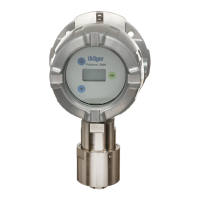
